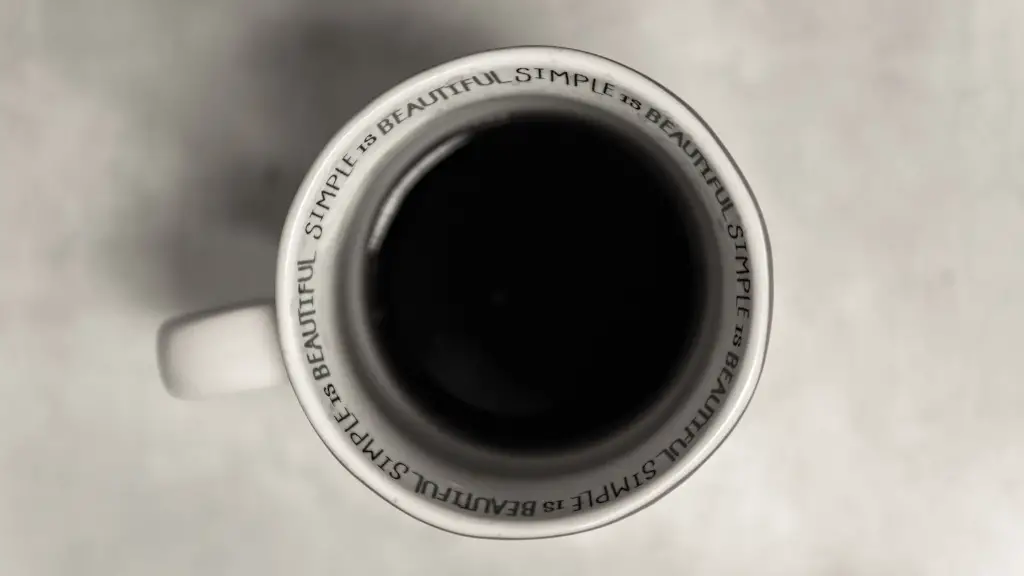Much More to a Starbucks Coffee Frappuccino than Calories
Coffee frappuccinos from Starbucks are now one of the most recognizable items when grabbing a caffeine fix. Many people don’t realize, however, that the drinks may contain more calories than one might expect for a simple coffee. While understanding the calorie count is an important consideration for anyone watching their diet, it’s just as important to understand the ingredients contained in a frappuccino and their respective consequences.
At the foundation of every Starbucks frappuccino, regardless of which particular flavor, is espresso or coffee. As a result, the primary ingredient, caffeine, offers numerous benefits. Caffeine is a natural stimulant, and can work to reduce fatigue, improve reaction time, and even increase the capacity to focus. From a health perspective, studies have been conducted that suggest caffeine can reduce the risk of type 2 diabetes, reduce the risk of some cancers, and even contribute to a longer lifespan.
However, there is a downside to consuming too much caffeine. If consumed in excess, caffeine can cause irritability and insomnia, as well as increase blood pressure and heart rate. It’s important to understand the caffeine content, which varies from drink to drink, but generally speaking, can range from 75-150mg per grande size.
Moving on from the primary ingredient, it’s important to consider the composition of other ingredients. Frappuccinos at Starbucks often contain disproportionate amounts of added sugars and cream, which can cause spikes in blood sugar and contribute to health conditions such as diabetes and obesity. Depending on the particular drink, a frappuccino can contain up to 400 calories. To this end, regardless of your indulgence in a particular sugar-laden beverage, it’s important to keep mindful of what exactly is giving your frappuccino its flavor.
From a nutritional standpoint, the frappuccinos emitted from the Starbucks kitchen are often classified as a milkshake depending on the particular ingredients. As a result, many healthcare professionals advise consumers to approach frappuccinos as a sugar-heavy treat , rather than a healthy alternative to other more nutrient-dense beverages.
While understanding your intake of calories and sugar is important, enjoying the occasional frappuccino from Starbucks can still come from a place of consciousness and responsibility. That being said, when indulging in a frappuccino you may want to try alternatives to full fat cream and instead opt for skimmed or semi-skimmed milk, or in some cases, almond and coconut milk options. You can also opt for a smaller caffeine kick, for instance, an espresso shot or Americano in order to generally reduce the overall caffeine content in the beverage.
Similarly, the addition of flavored syrups and sauces can reduce the drink’s calorie count significantly. Plus, healthier sweetener alternatives such as date and maple syrup help to reduce excess sugar intake and offer additional health benefits like vitamins and minerals.
Furthermore, frappuccinos are offered with a wide range of additional ingredients outside of the primary ingredients. The effects to health may vary but as a general rule it’s always best to consider the nutritional content of the syrups, sauces, and optional add-ons such as protein powders and fruit purées.
Alternative Heavy Frappuccino Ingredients
The heavy ingredients in a frappuccino don’t stop at the espresso, cream and added sugars. Many frappuccinos come fully loaded with decadent ingredients like melted chocolate and cookies, candied nuts, toffee crunch and more. These ingredients are especially important to take note of due to the fact that they add hundreds of additional calories, fat, and sugar to the final drink.
Moreover, some frappuccinos end up having more sugar than a large chocolate bar. At Starbucks, the caramel frappuccino is a perfect example coming in at 69g of sugar, which is more than double the 28g of sugar found in a Snickers bar. Ultimately, while indulging in a frappuccino may seem like an innocent way to get an extra boost of energy, it’s important to be mindful of the additional ingredients that can add up in your calorie count.
Conclusion
When it comes to Starbucks frappuccinos, it’s important to take into account the calorie counts of the individual drinks. While understanding the calorie count is an important consideration for anyone looking to watch their diet, it’s just as important to understand the ingredients contained in the drink and the respective effects each can have on your health. Ultimately, indulging on occasion or opting for smaller or alternative ingredients can go a long way to reducing overall sugar and fat intake without compromising on flavor.
Frappuccino Nutrition: What the Stats Say
When you consider the nutritional data of popular frappuccino beverages, it’s evident that the nutritional information varies depending on the size and type of drink. However, as a general rule of thumb, a tall size of a classic frappuccino (containing a double-shot of espresso, milk and ice) amounts to 255 calories and a grande clocks in at 370 calories. The calorie counts continue to rise with larger sizes and when additional ingredients come into play, for instance the classic, full-fat milk option increases the calories by nearly double.
To put the numbers into context, a tall Frappuccino from Starbucks is essentially the same as 4 biscuit crackers with cheese or a full size serving of custard with added double cream, adding further emphasis to the need for understanding the nutritional aspects to the beverages.
Exploring the Health Benefits of Starbucks Frappuccinos
Aside from the calorie count and added sugar content, there are some potential health benefits to drinking an occasional Starbucks frappuccino. For instance, many frappuccinos contain real fruits, slithers of nuts, seeds, and even protein powders. This can add additional vitamins, minerals, and antioxidants to your diet which offer a number of health benefits.
Furthermore, the antioxidants present in coffee have actually been linked to reducing symptoms of diabetes, protecting against liver complications, and improving the health of your heart. Even more, the omega-3 fatty acids present in some frappuccinos have been associated with reduced risks of cancer, improved joint health, and greater cognitive abilities. Ultimately, while understanding the calorie count is a must, it is also important to recognize that frappuccinos do offer certain health benefits.
Incorporating Frappuccinos Into Your Diet
When it comes to indulging in a Starbucks frappuccino, it’s important to understand how to properly incorporate it into one’s diet. For those who need to watch their calorie intake, the key is moderation. Drinking a frappuccino may be a part of a balanced breakfast, however, for those looking for a daily indulgence, two or three a week should be the limit. In terms of substituting alternative options for a frappuccino, ideas such as a nutritious smoothie with added vitamins and minerals is a great substitute.
Moreover, for those who consume frappuccinos often, it’s wise to consider the added sugars and carbs that can be found in the beverages. To this end, it may be beneficial to opt for non dairy and sugar free frappuccinos, or in some cases, alternative plant and nut milk options.
Conclusion
While the calorie counts of Starbucks frappuccinos are always important to keep in mind, it’s also important to understand the different types of ingredients found in the beverages, including fats, sugars, nutritional benefits, and more. Ultimately, understanding the nutritional angle to frappuccinos can help to reduce unhealthy dietary choices, as well as ensure that customers are getting the most from their drinks with regard to flavor and health.

